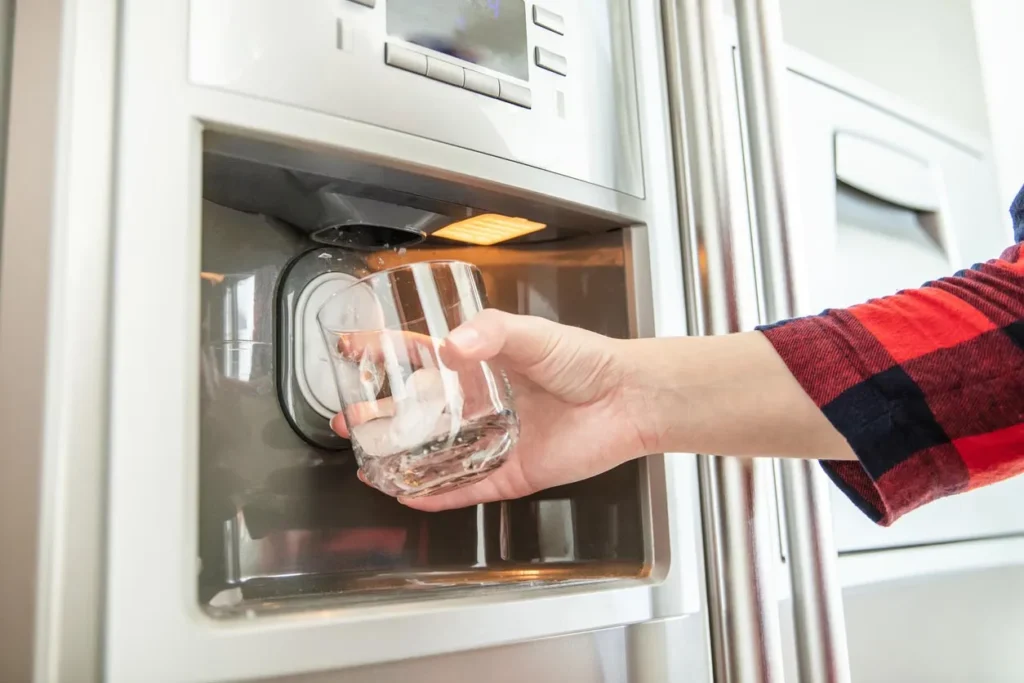How To Keep the Ice Maker Clean?
It’s really important to keep your ice maker clean so that it works well and doesn’t become a place for harmful bacteria and dirt to grow. Bacteria can make you sick, and one way you can get sick is by eating or drinking things that have these harmful germs in them.
If you use an ice maker a lot at home, you should make sure to clean it regularly. A common question people ask is how often they should clean their ice maker. If you’re wondering the same thing, this article will give you the answers you’re looking for, along with some helpful tips on how often you should clean your ice maker.
Why Cleaning Your Ice Maker Matters?
Regularly cleaning your ice maker is essential to maintain its efficiency and ensure the ice it produces is safe to consume. Over time, mineral deposits, mold, and bacteria can accumulate, affecting the taste and quality of the ice. Neglecting cleaning can also lead to clogs in the water lines, reduced ice production, and potential breakdowns.

Steps to Keep Your Ice Maker Clean
1. Gather Your Supplies
Before you begin, gather the necessary supplies, including a soft cloth, mild dish soap, warm water, vinegar, and a toothbrush.
2. Turn off the Ice Maker
Before you start cleaning, ensure the ice maker is turned off and unplugged. This eliminates the risk of accidents while cleaning the internal components.
3. Empty and Wash the Removable Parts
Remove the ice bin and any other removable parts. Wash them with warm, soapy water, and rinse thoroughly. This removes any residual ice and prevents bacterial growth.
4. Clean the Interior
Dampen a cloth with a mixture of warm water and mild dish soap. Gently wipe down the interior surfaces of the ice maker, being careful not to damage any components.
5. Address Stubborn Residues
For mineral deposits and stubborn residues, use a mixture of equal parts water and vinegar. Dip a cloth or a toothbrush into the solution and scrub away the buildup. Rinse thoroughly afterward.
6. Clean the Ice Scoop
Don’t forget to clean the ice scoop regularly. Wash it with warm, soapy water to prevent cross-contamination.
7. Sanitize the Water Line
If your ice maker has a water line, it’s crucial to sanitize it periodically. Flush the water line with a solution of water and vinegar to eliminate any bacteria or mold growth.
8. Perform Routine Maintenance
In addition to regular cleaning, perform routine maintenance recommended by the manufacturer. This may include changing water filters and inspecting the appliance for any signs of wear.
How to Tell If The Ice Maker Needs To Be Cleaned?
Apart from the suggested times you should clean your ice maker and the situations I mentioned earlier, there are also some clear signs that show your ice maker needs cleaning.
- Reduced Ice Production: Less ice being made than usual.
- Odor or Taste: Ice smells bad or has an unusual taste.
- Cloudy or Discolored Ice: Ice appears cloudy or has odd colors.
- Strange Noises: Unusual sounds like grinding or scraping.
- Slow Freezing: Ice takes longer to freeze than usual.
- Water Dispenser Issues: Water flow or taste problems in combination units.
If you observe any of these signs, make sure to clean your ice maker before using it again.
Benefits of Regular Ice Maker Cleaning
- High-Quality Ice: Clean ice makers produce clear, tasteless ice.
- Extended Lifespan: Regular maintenance can prolong the life of your appliance.
- Health and Safety: Eliminate the risk of consuming contaminated ice.
Conclusion
By following these simple steps, you can ensure that your ice maker produces clean, safe, and refreshing ice for your enjoyment. Regular maintenance and cleaning will not only enhance the quality of the ice but also prolong the life of your appliance.
Related Post’s
How To Get Ice Pops Out Of Mold?
